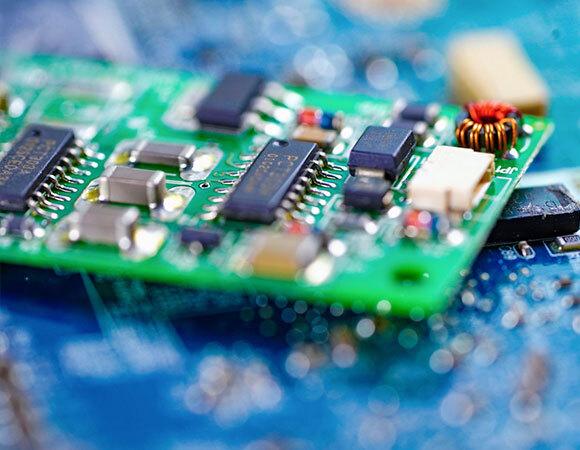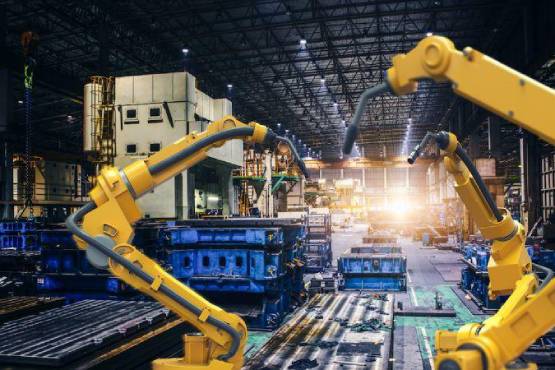 SMT assembly form part of the PCB assembly process. If you’re a business looking for someone to provide electronic manufacturing services (EMS) then there will be a number of boxes that you need to have ticked. The first of these will be the ability of the company in question to turn your design into a reality via their expertise and experience and the technology they utilise.
SMT assembly form part of the PCB assembly process. If you’re a business looking for someone to provide electronic manufacturing services (EMS) then there will be a number of boxes that you need to have ticked. The first of these will be the ability of the company in question to turn your design into a reality via their expertise and experience and the technology they utilise.
This is the bottom line, of course – can they deliver the goods – and once you’ve established that an EMS provider is indeed equipped to meet your requirements in terms of manufacturing capability and the ability to meet deadlines, the next question will be: Can they deliver value for money?
Cutting costs
It’s one of those questions which is simple to ask and somewhat more complicated to answer – how can an EMS provider lower production costs on a project without impacting on the quality of delivery? Here at DSL we’ve been delivering PCB assemblies for more than 30 years, and our driving mission over that period has been precisely this – working in a manner which combines quality with value for money, flexibility and responsiveness. We like to think the fact that we offer an industry leading 5 year warranty on everything we produce speaks for itself in terms of the quality of the work we do. In this article we’ll look at how we embrace the latest technology and the industry wide shift toward automated processes in order to keep the production costs faced by our customers as low as possible. It all starts with Surface Mount technology (SMT assembly).
What Is Surface Mount Technology (SMT) Assembly?
Surface Mount Technology (SMT) assembly is a working method which involves electronic components being mounted directly onto the surface of a Printed Circuit Board (PCB). One of the key advantages of SMT is that it enables components to be mounted on both sides of a PCB without holes having to be drilled. This saves space and time during the production process itself and also enables PCBs to be manufactured with more ‘density’ – more components in a smaller physical space – something which is ideal for the manufacture of compact electronic devices such as smartphones. The advantages of SMT when compared to more traditional through-hole technology include:
- Cost Savings: A reduction in the amount of labour involved, leading to cost savings
- Less Wastage: A similar reduction in wastage thanks to the automated precision of the SMT process, again leading to cost savings
- Efficiency: Reduced production cycle times and greater efficiency
- High Precision: Extremely high levels of precision delivered through automated delivery, resulting in high quality PCBs
How DSL uses SMT Assembly to deliver superior results
Here at DSL we pride ourselves on investing in the very latest SMT technology, enabling us to deliver state of the art solutions at affordable prices. When combined with our innovative flexible delivery schedules it’s an approach which means our clients can more easily manage cash flow and expenses and work toward healthier profit margins.
Step-by-Step SMT Assembly Process at DSL
It all starts with a bare PCB, sourced from trusted suppliers. Next we come to our dual in-line pick and place machines, automated robotic devices capable of placing components onto PCBs with total precision. The electronic components themselves are delivered to DSL in reels and trays and then carefully loaded into the pick and place machines.
Step 1: Solder Paste Application
The first step we take is the careful application of solder paste onto the pads on the bare PCB. This was once a time-consuming and frankly tedious manual task but it is now carried out by an automated stencil printer which applies the solder paste at speed and with complete accuracy.
Following the application of solder paste, the PCBs are carried by the continuous conveyor system to the next stage of production. The presence of the conveyor system, allied to the fact that each machine in the SMT assembly line communicates intelligently with each of the other machines, is what helps to make the process utterly seamless and represents an embrace of the future of electronics manufacturing ().
Step 2: Pick and Place SMT Assembly Machines
 The next step in the automated SMT assembly line involves the pick and place machines. These advanced, automated devices are capable picking and scanning specific components from a selection sometimes amounting to tens of thousands, and then placing them on the PCBs with sub-millimetre precision. The machines work at a genuinely impressive pace – placing up to 16,000 individual electronic components into position per hour. We maximise productivity and efficiency by having two of the pick and place machines which can operate simultaneously.
The next step in the automated SMT assembly line involves the pick and place machines. These advanced, automated devices are capable picking and scanning specific components from a selection sometimes amounting to tens of thousands, and then placing them on the PCBs with sub-millimetre precision. The machines work at a genuinely impressive pace – placing up to 16,000 individual electronic components into position per hour. We maximise productivity and efficiency by having two of the pick and place machines which can operate simultaneously.
One thing that we’re extremely proud of is that the advanced, automated technology of our SMT line only works as well as it does thanks to the expertise and skill of the people operating it. The accuracy with which each and every component is placed is made possible initially by the meticulous creation of a profile, a process which is carried out by one of our highly skilled operators. Creating PCB assemblies which are robust and reliable is an art as well as a science, and it’s a process which is only made possible because the team at DSL have got the hands-on experience and technical know-how to ensure that we get the most out of every piece of advanced technology we use.
Step 3: Reflow Oven
Speaking of advanced technology, after moving past the pick and place machines, the PCB is carried seamlessly into a state of the art 12-phase reflow oven. Within this oven the board is subject to a range of different temperature zones, each chosen to ensure precise adhesion of every component soldered into place.
Step 4: Through-Hole Component Placement (if required)
After this, some PCBs require the placing of through hole components. Through hole technology is a method of placing components on PCBs which was almost superseded entirely by SMT, but which is still preferred in some PCBs. Particularly those which will be expected to operate efficiently at speed or in environments which impose a high degree of physical stress, extremes of temperature or high voltage levels.
THT is also often the preferred method for the adhesion of larger parts which require a more robust attachment. Examples might include connectors, battery holders and heavy capacitors. At DSL the through hole components are put in place by one of our skilled operators, using a high-accuracy soldering station. This is a process which again reflects our commitment to combining the most advanced technology in the sector with the kind of hands-on skills which are simply irreplaceable.
Step 5: Inspection and Testing
 Finally, the completed PCB is subject to an in-depth inspection via a 3D automated optical inspection machine, a process which ensures that every PCB we work on meets our stringent quality standards. The fact that we often focus on delivering projects for industrial applications means that we’re accustomed to delivering results which are robust enough to function around the clock for many years of operation.
Finally, the completed PCB is subject to an in-depth inspection via a 3D automated optical inspection machine, a process which ensures that every PCB we work on meets our stringent quality standards. The fact that we often focus on delivering projects for industrial applications means that we’re accustomed to delivering results which are robust enough to function around the clock for many years of operation.
We apply the same rigorous standards to everything we work on. The inspection is followed by connectivity and functional testing – our way of making sure that every item is fully and flawlessly functional.
Streamlining the Final Stages: PCB Assembly and Box Build Services
The next stage after is up to the client – for some this just involves us carefully packing the PCB assembly and storing ready for delivery. Many clients take advantage of our box build service, having the PCB mechanically assembled into an enclosure of some kind. This is just one more service which enables us to cut the workload and production costs of our clients, while the fact that every stage of a project can be delivered in-house by DSL is a guarantee of consistency and excellence from start to finish.
Automated SMT Assembly Line lowers production costs
The speed and efficiency of our automated SMT line means that we’re able to work quickly and efficiently whilst meeting the highest standards of delivery, enabling our clients to save money on the costs of manufacturing without having to worry about the standards of the finished items. We combine the latest in automated technology with time-served, hands-on skill to deliver affordable and excellent results. Contact us to discuss your project in more detail.


